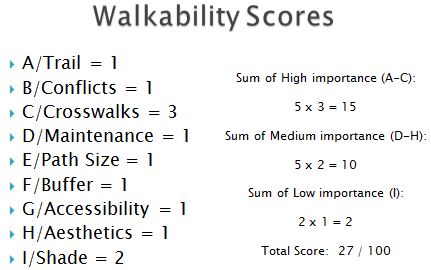How To Create A Safer Environment In Your Community
Recently I participated in a built environment experiment in which many participants self-reported several dangerous and unsafe recreational paths in their community. The projects ranged from analyzing the safety of intersections to figuring out how we can make drivers more aware of their obligations when approaching school zones. For my project, I decided to analyze the pedestrian sidewalk across from Farmingdale Physical Therapy West on Hempstead Turnpike. My rationale behind my built environment project, as well as the participants, was to help raise awareness about the neglected safety of pedestrians, increase physical activity, and to publicize our concerns so we can improve our community.

The part of the pedestrian sidewalk that I decided to analyze spanned 600 feet and connected a residential community to a commercial development. In addition, pedestrians had to cross an entrance/exit ramp to the expressway and under an overpass. In my analysis, I decided to use a Walkability Assessment Worksheet featured in the book “A Resident’s Guide for Creating Safe and Walkable Communities” by Laura Sandt. The worksheet put different qualities into three categories that are graded from one to five; High importance, medium importance, and low importance. The high importance category included the overall condition of the trail, any conflicts along the trail, and the conditions of the crosswalks. Meanwhile the medium importance category included maintenance, trail size, trail buffer, accessibility, and aesthetics with the low importance category only including the amount of shade providing on the trail. Along my walk, I observed that there was trash littered all along the side of the road, several broken/hidden signs, no guard rail to protect pedestrians, the sidewalk stopped at a certain point, and that there were several potholes along the trail. I came to the final conclusion that pedestrians that used this sidewalk were at a high safety risk with the following scores…

In order to provide safe and enjoyable pedestrian sidewalk, Sandt urges that there are four improvements that must be made. First, each pedestrian sidewalk needs the proper physical changes to the infrastructure (street, sidewalk, signs) that affect the operation and movement of traffic and pedestrians. Second, you need to educate pedestrians about the sidewalk by providing strategies that aim to motivate a change in behavior. Next, enforcement of the laws and regulations must be upheld to provide the necessary improvements are being applied. And fourth, efforts to promote walking must be encouraged in order to increase the level of walking in a community. Since this a highly traveled route, I developed several approaches that should be taken to improve the conditions of the trail.
1. Move sidewalk away from turnpike so you can add a guard rail between the sidewalk and the turnpike for safety precautions.
2. Repave the sidewalk to improve walking conditions and accessibility.
3. Replace any existing road signs because those that are there are either failing down or rusted.
4. Clean up the trash that lines the trail and is found in the bushes. This will create a more welcoming environment and increase exercise.
If you feel that there is an area in your community that needs an improvement, I urge you to go out and conduct your own built environment experiment to help improve your community.
Source:
Sandt L. A Resident’s Guide for Creating Safe and Walkable Communities. DIANE Publishing; 2011.

